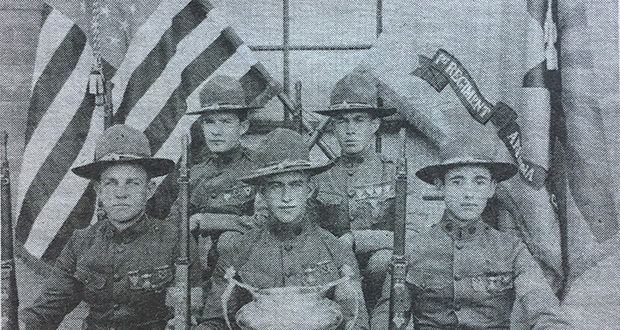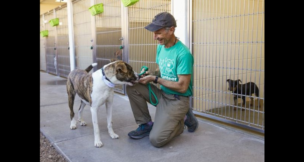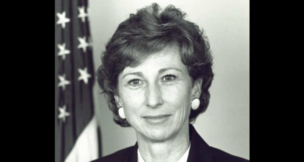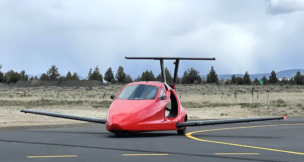Tomb of memories
Arizona Capitol Reports Staff//December 19, 2008//[read_meter]
One day when Ed Schieffelin was heading out for some prospecting, a friend asked where he was going. Ed replied he was going to the hills “to look for some stones.” Schieffelin’s friend warned “the only stones you’ll find over there will be a tombstone.”
In the late 1870s, Schieffelin was prospecting in the heart of Apache land southeast of Tucson. By 1878, he had found the stones he was looking for — silver. He quickly established three mines “The Lucky Cuss,” “The Tough Nut,” and the most famous “The Contention.” By 1879, Schieffelin’s discovery led to the thriving community of Tombstone.
J. W. Walker was an early resident of Tombstone. He arrived in Arizona on a burro with all his possessions on other burros. He helped supply meat to a major market in Tombstone. Walker commented in 1929 that “sometimes I would bring in as many as 20 antelope in on one load. Try and do it today.”
S. J. Tribolet may have been the owner of that meat market. Tribolet arrived in Arizona in 1872 from California. He spent some time in Prescott and then moved to Tip-Top in the Bradshaw Mountains. Upon arriving there, Tribolet met some new friends at a saloon who “began to pump bullets at his feet as he ‘danced.’ The bullets from revolvers stopped suddenly…and (someone) stepped forward to remark to Tribolet that ‘now you’re one of us.’”
With the discovery of silver, Tombstone rapidly grew to a city of more than 12,000 residents in only a couple of months. Tribolet decided to find opportunities there. He decided to walk to Tombstone with just his blankets, water and food. After arriving, Tribolet built the Crystal Palace dance hall along with the first brewery in Tombstone.
Tribolet also ran the butcher business in Tombstone for a short time. At one point, he bought a herd of cattle. After taking delivery of the cattle, Tribolet was visited by an angry cattleman with two six-shooters who insisted the cattle had been stolen from him. Tribolet again paid for the cattle.
A short time later, Tribolet was confronted by another cowboy who made the same demand backed with weapons. Tribolet again arranged to pay for the cattle.
Fortunately, Tribolet arranged to pay the scoundrels at the Crystal Palace. By the time the extortionists left the famous destination, they had lost all their money to the ‘house’ — which went right back to Tribolet.
Eventually, the mines ran out and flooded. Tombstone became a community moving toward ghost-town status.
In 1929, local activists in the city of far less than 1,000 people decided to celebrate the 50-year anniversary of Tombstone.
Residents and the town dressed in the costumes of the 1880s. Early pioneers such as Tribolet were invited to attend. Col. William ‘Billy’ Breakenridge, a former deputy sheriff in Tombstone, was the honorary sheriff. John P. Clum, first mayor of the city of Tombstone and founder of the Tombstone Epitaph, served as the event’s honorary mayor. During the old timer’s parade, Breakenridge carried a rifle and six-shooter. Clum carried a fountain pen, calling it “the mightiest of weapons.”
The event, called Helldorado, was advertised as the re-creation of the Wild West. Tombstone was billed as “the wickedest city in this old world…inhabitants were engaged chiefly in gambling, booze-guzzling, and gun fighting…at least one dead man was provided for breakfast each morning.”
While it was a great party and entertaining celebration, Clum noted the real Tombstone was a pretty mild place. Even though Helldorado featured a stage robbery, a murder, a lynching and a famous gun battle during its four-day run, Clum could recall only one street battle and one lynching during 50 years of the famous town’s existence.
Some 12,000 visitors trekked to Tombstone to celebrate its 50th anniversary. By car, it was more than a five-hour drive from Phoenix in 1929. Special trains were chartered from both Phoenix and Tucson.
The Union Auto Scenic Tours from the San Carlos Hotel in Phoenix provided a package that left Phoenix in the morning, visited Tombstone in the afternoon, spent the night in Nogales, and returned to Phoenix the next day. The trips, advertised as “Civic Excursions,” cost $16 per person ($192 when adjusted for inflation) for the round trip.
As the celebration ended in Tombstone, it was noted “the crack of firearms, and the clinking of whiskey glasses…and stark reality came back to rule in Tombstone, a tomb of memories.”
— Mike Miller. Photo courtesy of the Library of Congress, Prints & Photographs Division, FSA/OWI Collection, LC-USF34-036306-D.


















